What Educators Need: Building Cultures of Trust in an Era of Top-Down Educational Legislation
Key Points
-
This article explores the prevalence of top-down legislation and accountability systems in education today.
-
And the ways they are negatively impacting PreK-12 educators in the United States.

By: Jennifer D. Klein
The exodus of teachers from schools across the United States shouldn’t surprise anyone. It’s not a particularly global phenomenon; it’s a US problem, one that’s been a long time coming. According to surveys run by the National Education Association, an alarming 55% of educators are thinking of leaving the profession earlier than they originally planned, and teacher burnout is at an all-time high. Even before COVID, the expectations and restrictions on education were paralyzing teachers across the country, with constant testing and other imposed accountability methods taking precious time away from student learning.
In addition to endless lists of protocols and things we must do, educators today are facing endless lists of things we can’t do, either, from choosing our own library books to teaching all students’ cultural histories. The consequences for stepping outside those lines are huge—for individual teachers and for their leaders at the building and district level. The whole thing reeks of a complete lack of trust in teachers to do both academic formation and social-emotional formation, both of which have been part of our job description since formal education began and we took on our legal role en loco parentis (in place of parents). Add to all of this the endless list of school shootings, which gets longer every day, and the claim in many states that our best solution is to arm teachers… It’s no wonder educators are fleeing from the profession in droves. Even though educating is a calling more than a profession, and we teach because we love children and want to help improve lives for the future of our country and the world, passion isn’t always enough to balance the obstacles to doing it well. If we can’t do what we know is right for students, and we can’t even ensure kids’ basic safety without risking our own lives, why would we stay?
The Problem With Standards
Top-down educational policy and accountability structures have long plagued the educational field. Given the role of women in the early history of formal education, and the fact that it took decades to move teaching from a trade to a profession—which implies the ability to train people and ensure success—the systems governing education in the United States have never included much to suggest trust in educators. The standards movement made this issue even more extreme by revealing real gaps in quality and achievement across schools, but movements like No Child Left Behind over-standardized what we mean by achievement—and started eliminating school funding on the basis of achievement gaps. Ultimately, because funding and autonomy were on the line, such movements did more to hurt schools than to help them improve.
As Jonathan Kozol pointed out in Ordinary Resurrections early in the standards movement, parents always throw money at private schools when they want to see something better occur, so where did we get the logic that defunding struggling schools would help them improve? The adherence to standardized outcomes, and the use of financial punishment to enforce them, has done little to improve education; if anything, we have simply entrenched a dominant theory about what students need to learn and know how to do, and have ignored the specific needs of educational communities, particularly those not well served by the dominant culture’s ideas about achievement.
While I understand the logic behind the standards movement, and I agree that we need to ensure a quality education for all students, not all students or school populations are the same, and many are not well served by current definitions of achievement. As Sir Ken Robinson suggested about national and international standards in 2016, “The problem is that these systems are inherently unsuited to the wholly different circumstances of the 21st century.”
Many districts are doing exceptional work to shift local policy, and new movements in place-based learning are reclaiming the rights of indigenous and marginalized communities to define their own educational systems and outcomes…
Jennifer D. Klein
I would go even further and suggest that humans are inherently non-standard; each individual has different needs and talents, and no two minds work the same way. Instead of hammering educators with exams and requirements that tie their hands and then expect miracles, what we need is an educational system that trusts teachers as the most important experts when it comes to their own populations’ needs—and which equip them to be exactly that. Certainly, increased funding for deep and personalized professional learning for teachers needs to be a central component of ensuring quality and success in all school communities, even if we define those concepts differently in different settings. Perhaps some of the funding currently used to maintain complex and expensive accountability systems might be reallocated to support teachers’ growth, as the intentions of education should always be to teach more than to test.
A shift in policy is not an easy path to imagine, given the political division we are currently seeing in the United States, and the near paralysis it has caused when it comes to passing federal legislation, but the waves of change are mounting. In a recent report on post-pandemic priorities in education from The Century Foundation, the authors note that “…educational policies must place less emphasis on standardized testing as the primary measure of school accountability and student achievement.” They note that attempts to improve education over the last three decades have had “dismal results,” including consequences such as failure to close the achievement gap and a significantly narrowed definition of what academic achievement even means, as it has been reduced to scores on a handful of standardized tests. As Jal Mehta notes in an article on the “new grammar” of education, the need to shift how we view education is supported by research on the science of learning, which encourages a more interdisciplinary approach that offers “richer portraits of who our students are, how they construct knowledge, and how cultural and social experiences shape their understandings.” So while most policy makers are pushing for increasingly segmented, siloed and externally controlled educational standards and classrooms, research suggests our students need the exact opposite—something educators have been aware of all along.
The Landscape Model of Learning
In my new book with Dr. Kapono Ciotti, The Landscape Model of Learning, we have developed a new way of thinking about education designed to recognize and honor the diversity of students so that we know them as deeply as possible, work with them and their families to identify the most appropriate goals for each, and design personal pathways that allow each student to reach the highest level of success possible. It is a model deeply grounded in place-based learning, in the decolonization of educational thinking so that all students are seen, supported, and able to reach their highest levels of success. Teaching educators to know their students well enough to adjust their educational approaches to the children in the room is only the first step—the second is understanding and honoring the educators as well, for all they bring to the learning ecosystem. In our experience, just as a child who feels seen and supported will do remarkable things, a teacher who feels visible and trusted is much more likely to work miracles, whatever the restrictions they may face.
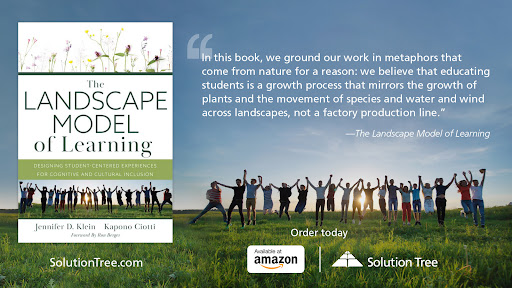
Mehta believes we have reached a “hinge moment” in the history of education. Being careful to note that this is not the fault of educators but of the systems that govern their schools and choices, Mehta asserts that “Our present situation calls for flexibility, relationship-building, and deep engagement with the broader world, but our school systems are bureaucratic, transactional, and insular.” In his last work, Sir Ken Robinson refers to this moment in educational history as a “critical pass” (p. 9) caused as much by the destruction of the planet and our unsustainable approaches to life on earth as by the mistakes of educational policy. He writes, “Over the centuries of human life, we have shaped and reshaped our existences. In doing so, we have reached a critical point in our evolution. It is time to take stock of what kind of a world we have created, and what it means to be human in it” (p. 9). Both authors invite us to consider the disconnect between educational policy and the actual needs of the educators and students inside our schools, particularly when it comes to the kinds of skills and knowledge our times require of young people—as compared to the skills and knowledge generally valued by educational policy-makers and standardized exams.
It’s not like this everywhere, though it’s hard to remember that sometimes. There are schools all over the world that are getting it right, building communities where teachers are trusted and enjoy their work, even feel empowered to do right by kids. There are even schools where students are the central protagonists, trusted by the educators who work with them to manage more of their learning journey and articulate their own growth. Many districts are doing exceptional work to shift local policy, and new movements in place-based learning are reclaiming the rights of indigenous and marginalized communities to define their own educational systems and outcomes, how they believe achievement should be defined inside their schools. There are even entire countries building systems that rely on teachers to make most decisions about students’ learning needs.
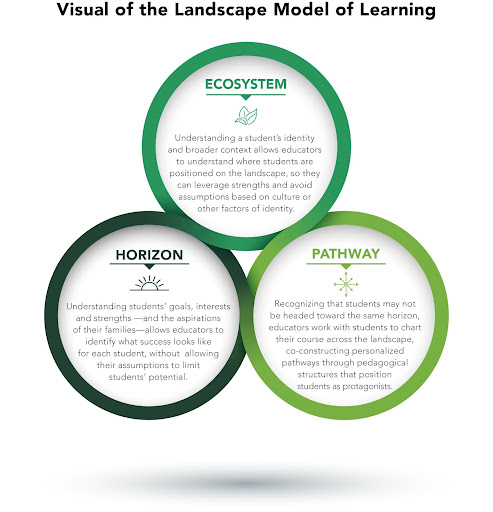
Finland continues to be one of those countries. According to my conversations with former primary and middle school principal Sampo Lokki (personal communication, May 18, 2022), a Finnish expert in leadership and school management, teachers in Finland have significant authority and autonomy. They do have to follow a ministry curriculum, which is developed by the Finnish National Agency for Education, an organization managed by the ministry of education and made up of educators, but how they accomplish that curriculum is very much up to teachers and school leaders—and it can and should be personalized as needed. While there are some non-negotiables, such as the requirement to incorporate social-emotional learning in the curriculum (as established in 2014), teachers in Finland are not given a script, they are not controlled by government, and they participate in adapting and building off of the ministry’s expectations in order to meet the particular needs of their communities.
According to Lokki (personal communication, May 18, 2022), accountability systems are internal to each school in Finland, with school principals using ministry-designed tools to manage all teacher evaluation. And even when students are evaluated on a national level, which occurs in 9th grade as part of the application process for high school, students’ scores are based on teachers’ perceptions of individual student knowledge and growth, as gathered from standardized exams and their lived experiences in the classroom. All information about school performance is public, and there are mechanisms for reporting specific concerns. All of this has built a culture of trust in educators and belief in their decision-making authority—and very few teachers who join the field ever leave because of the trust they experience as educators. As Lokki puts it, what makes a school successful is a trifecta of trust: “Emphasize your leadership and management, trust your teachers, and listen to your students.”
These ideas about and approaches to education align perfectly with the culture of trust and “inclusive prosperity” that The Landscape Model of Learning espouses. Recognizing the basic humanity of every child, their capacity to grow and to reach their own highest level of personal success, must be paralleled by the same belief in educators. As I wrote for What School Could Be recently, “Only when we listen to our students and teachers, and see them as whole human beings, can we effectively support each of them on their personal pathway through learning.” And the foundation of such work lies in trust.
What Can We Do?
So, how do we stop this mass exodus of teachers from the field, and how do we encourage a new generation of educators to sign on to a field that many rational, talented people are leaving? We trust them to know what’s best for our children, and we demonstrate that trust by putting the bulk of educational decision making in their hands. In Deliberate Optimism, a must-read for today’s educators, authors Debbie Silver, Jack C. Berckemeyer and Judith Baenen frame the commitment of teachers as “an unbreakable pact with the future,” writing that educators “promise to do the best they can with what they have and with what they know in order to mold successfully the next generation (p. 5). If we want educators to stay, we need to offer them more than just an occasional teacher appreciation party or parents’ association gift. We need to recognize and honor the pact that educators have made with our families, to do the best they can for our children. We need to build new systems that respect educators’ abilities, that trust them to know their students better than any legislator could, and that give them the time, tools and training to bend their curriculum, pedagogical approaches, instructional practices and even outcomes to meet the needs of the students in front of them. As Kate Robinson put it in a 2021 event for What School Could Be, referencing something her father Sir Ken Robinson said often, any system created by humans can be transformed by humans as well. We don’t have to stay victims of a system that needs improvement, and neither do our students, if we have the will to change it.
If we can’t make this shift, we will be facing one of the most severe teacher shortages in the history of U.S. education—and without professionals to facilitate learning, we will find ourselves hard pressed to do more in schools than provide childcare. Now more than ever, we need to recognize the incredible importance of education, of the positively Herculean task of being a teacher, and to build systems and policies with fewer obstacles to quality teaching and learning.
Jennifer D. Klein is a product of experiential project-based education herself, and she lives and breathes the student-centered pedagogies used to educate her. She is a former head of school with extensive international experience and over thirty years in education, including nineteen in the classroom.
This post is part of our New Pathways campaign sponsored by ASA, Stand Together and the Walton Family Foundation.



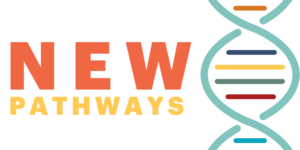
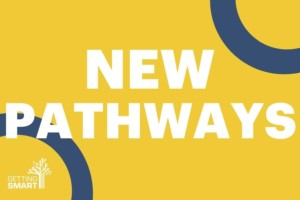
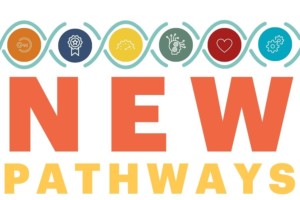
Nadia Rolle
Profound and excellent read! Similar challenges occur in the non-educational sector when directives are top-down from leaders who are too far removed from the process to understand and appreciate the needs of employees/departments. I wholeheartedly agree with returning the power and trust to those directly affecting our children's educational success. Who better to decide what's best for them?